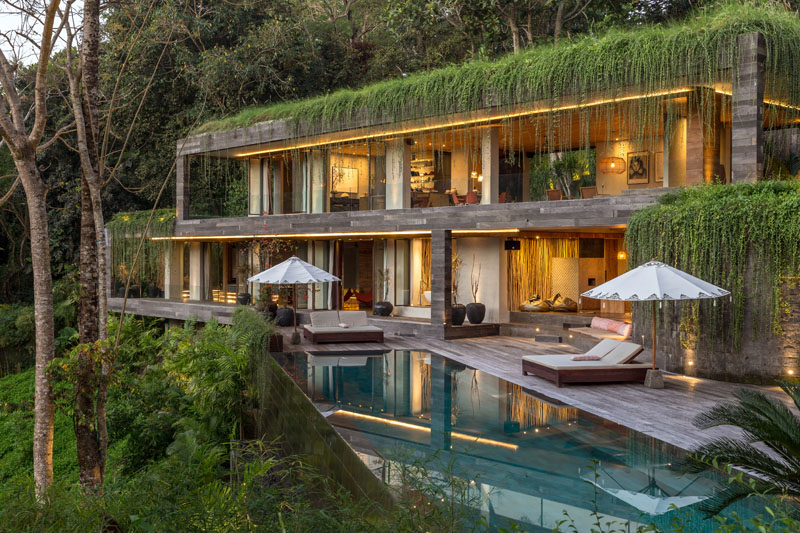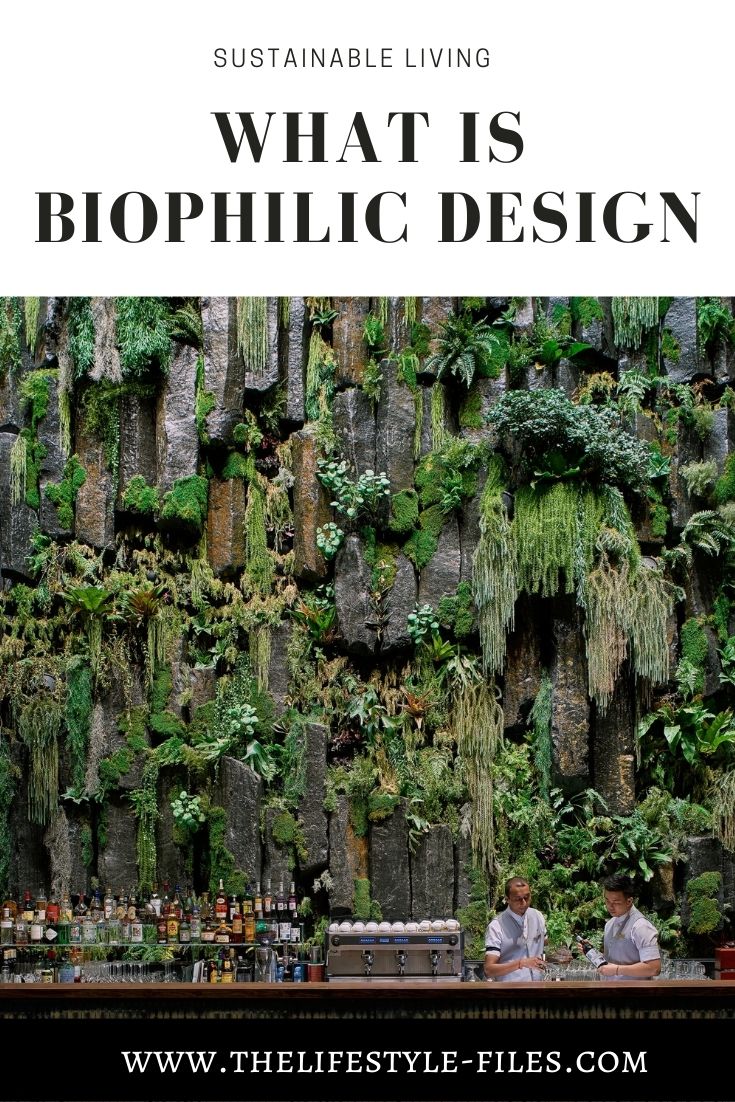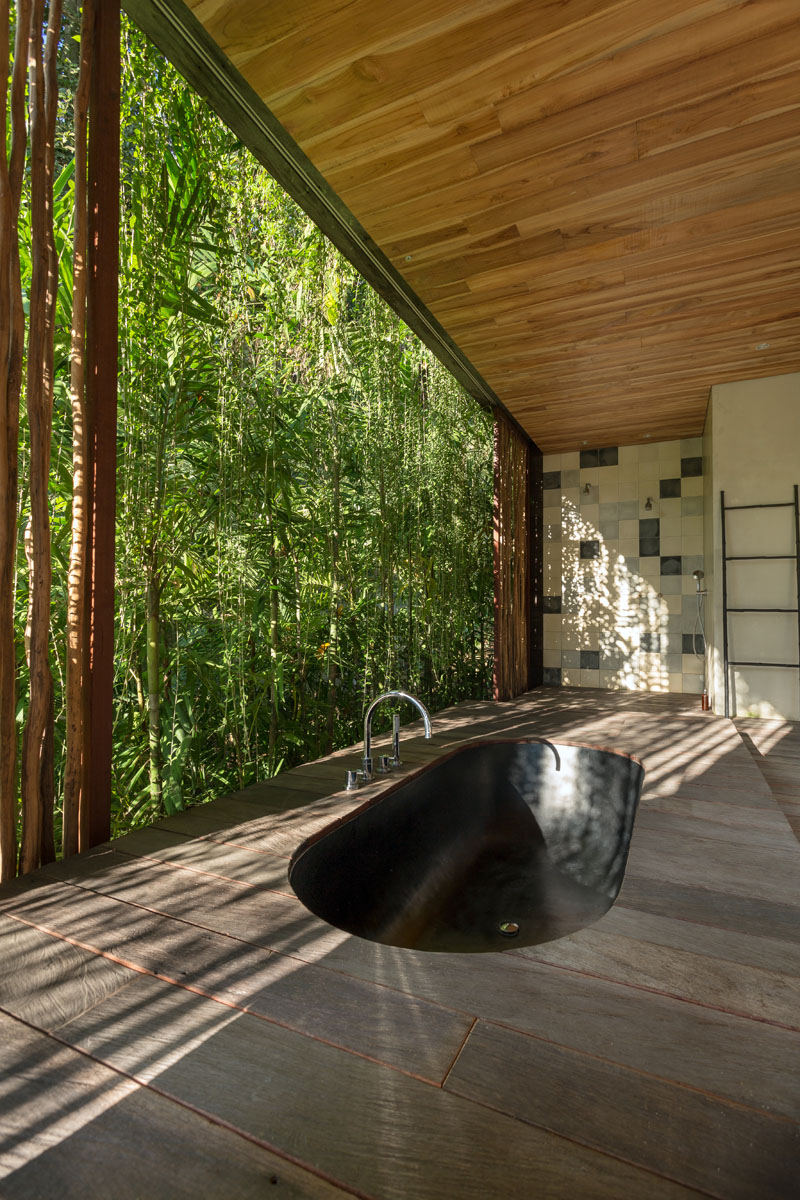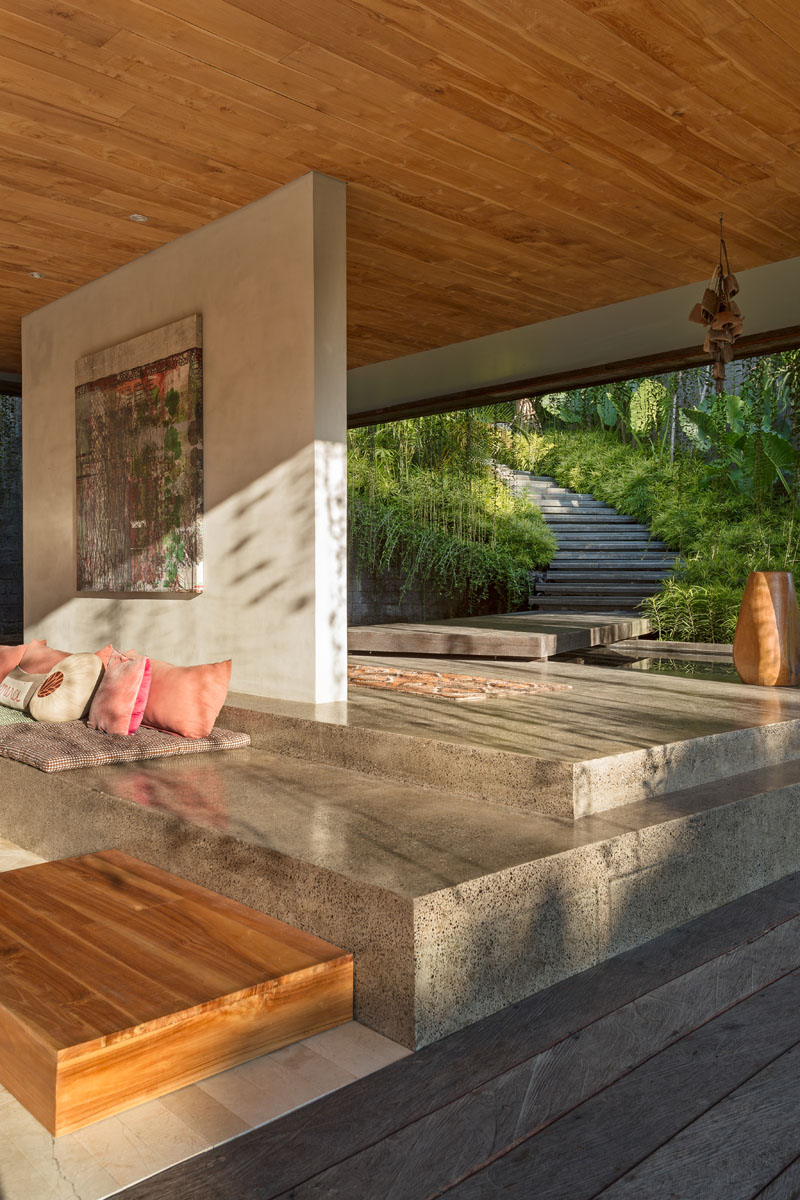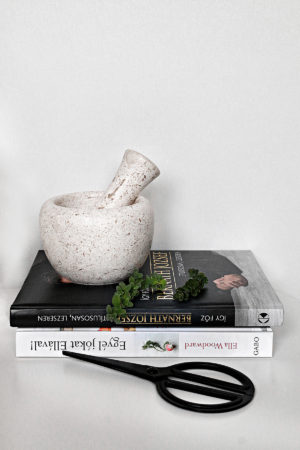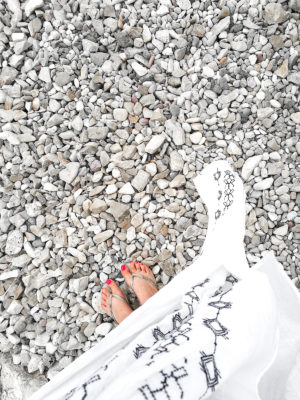There are two urgent challenges for the architects and designers of the 21st century: designing spaces with sustainability and human wellbeing in mind. Biophilic design could play a crucial role in transforming our built environment into more sustainable and healthier spaces so I’m very excited to see it featured in interior design and urban planning more and more frequently.
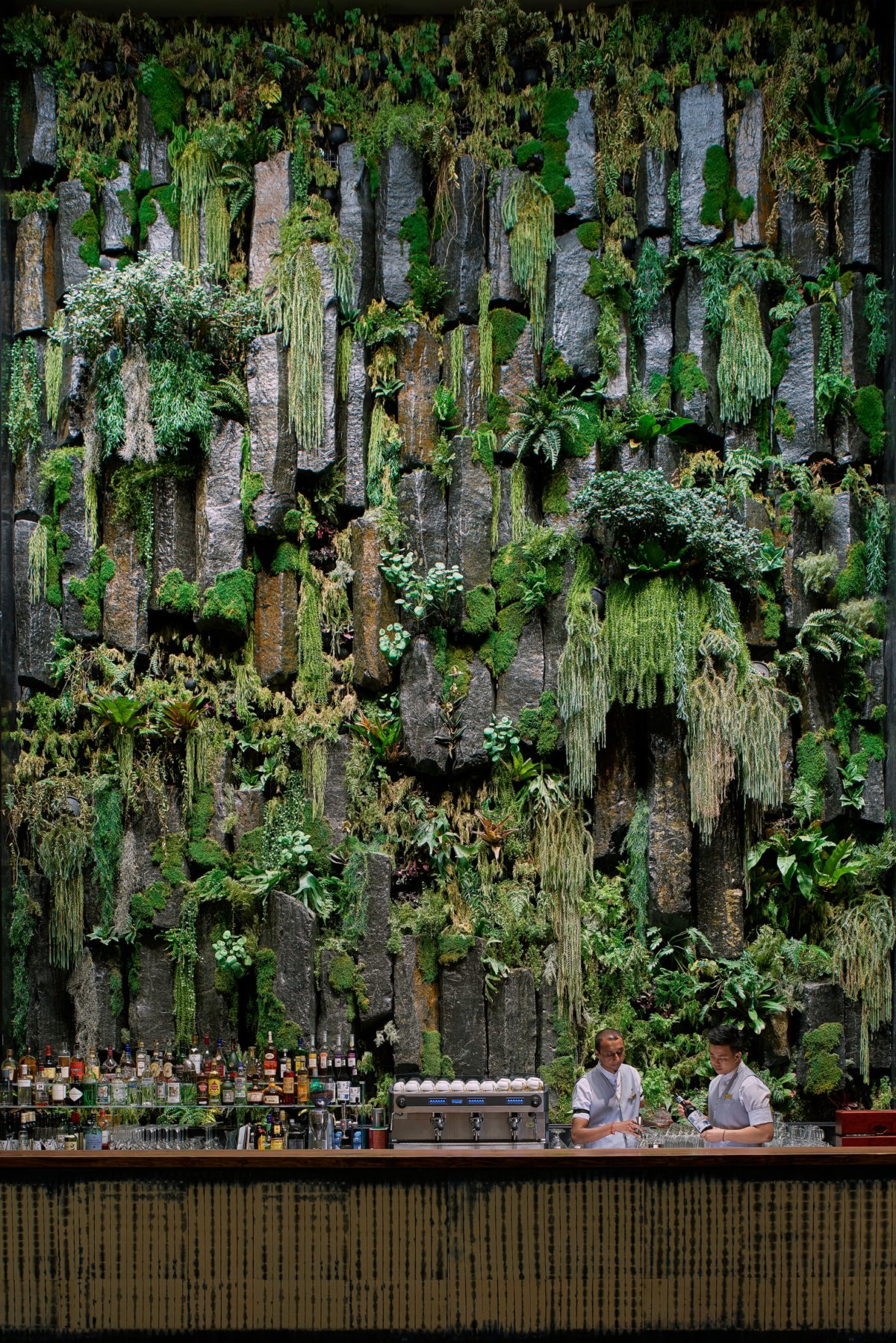
Connecting with nature
Biophilia literally translates to a love of life/living things/nature. While the underlying theme of connecting with nature is as old as humankind, this specific concept was popularized by an American biologist and naturalist called Edward O. Wiley in his 1984 book Biophilia. He argued that humans have an inherent need to connect with nature and other biotic forms due to our evolutionary dependence on it for survival and personal fulfillment. We have both a physiological and mental need to be around and feel nature and natural forms. The problem is that modern life has distanced us from nature – we are living in concrete urban spaces surrounded by artificial forms and materials and this has put a great toll on our wellbeing, not to mention the environment.
Building on this hypothesis, biophilic design strives to reconnect us with nature and tries to bring the outdoors in. It incorporates natural elements (from light to greenery), forms, textures, and features into public spaces, architecture and interior designs.
Wellness and environmental benefits
The positive connections between our wellbeing and nature are thoroughly researched. On the most empirical level, I think we can all agree that most of us feel more relaxed surrounded by natural forms and greenery. Studies have also shown evidence of other positive benefits of human interaction with nature, like improved productivity, faster emotional restoration, lower levels of stress, better mental health and quality of life, and even improved recovery rates following an illness. Since we spend almost 90% of our time indoors how that space is designed has an enormous effect on our health – both physical and mental. By mimicking natural elements with the help of biophilic design, we can harness these positive benefits in our homes, workplaces, and cities.
Biophilia can play an incredibly important role in sustainable development. It strengthens our (almost lost) connection to nature which is important for conservation – the more we feel connected to something, the more we will care about and defend it. Adding more greenery, water, and natural elements especially to urban public spaces also reduces carbon emissions, the heat island effect, and increases biodiversity.
While biophilic design has tons of sustainability benefits, it is important to note that there is a difference between green/ sustainable architecture and biophilic design. Green architecture is mostly about minimizing the environmental impact of the built environment, while biophilic design emphasizes connecting with nature. The best scenario is when they go hand in hand, complementing each other.
Biophilic design in real life
Biophilic design can be implemented at the community, building, or small-project level. It is not simply about adding a bunch of plants to a room – though of course plants and greenery are an integral part of it. But it also includes features like:
- Incorporating natural light and ventilation,
- Using natural materials, like wood or stone
- Mimicking natural shapes, forms, and geometries
- Showing views of nature, whether directly through a window or indirectly by images, photos, murals
- Using natural colors or earth-tones
- Strategically using natural elements like greenery and water
- Using green walls and rooftops
Here are some more real-life examples of biophilic design.
Old-school biophilic design (before it was even called that) in the Barbican Center, London
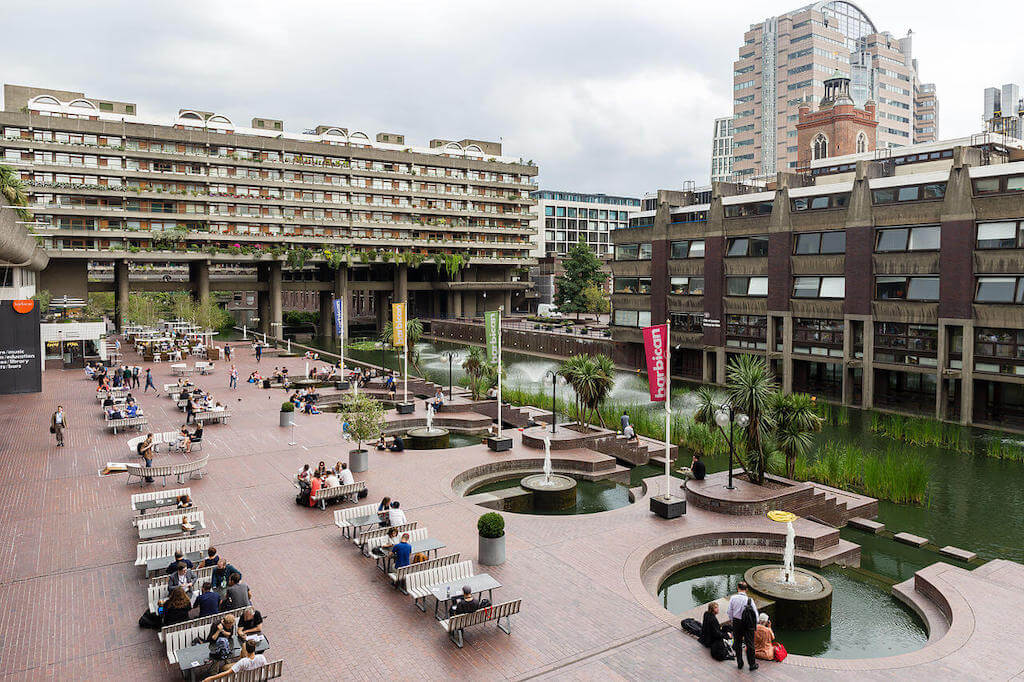
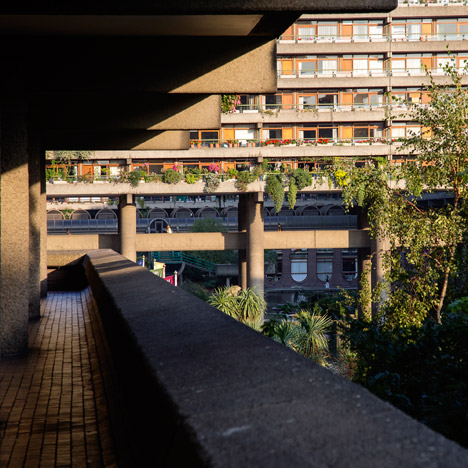
via dezeen 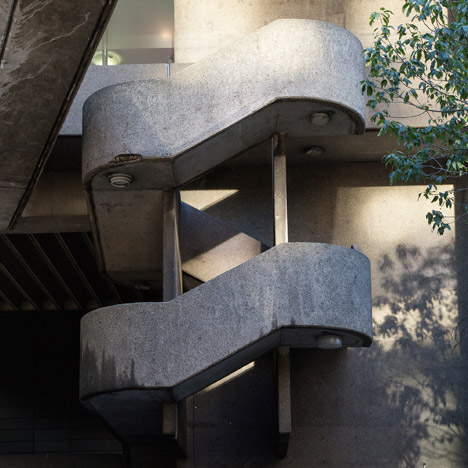
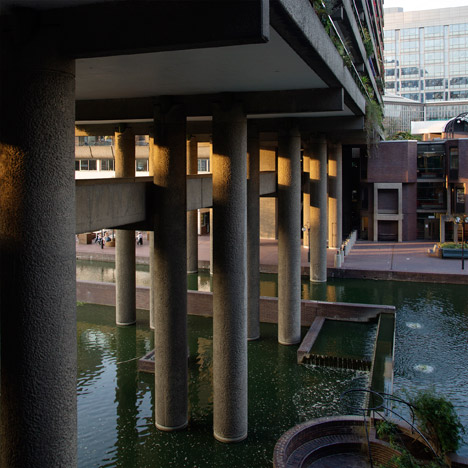
Thorncrown Chapel is a well-known example of biophilic design – due to the glass and wooden walls and roofs, it feels like you’re sitting in nature.
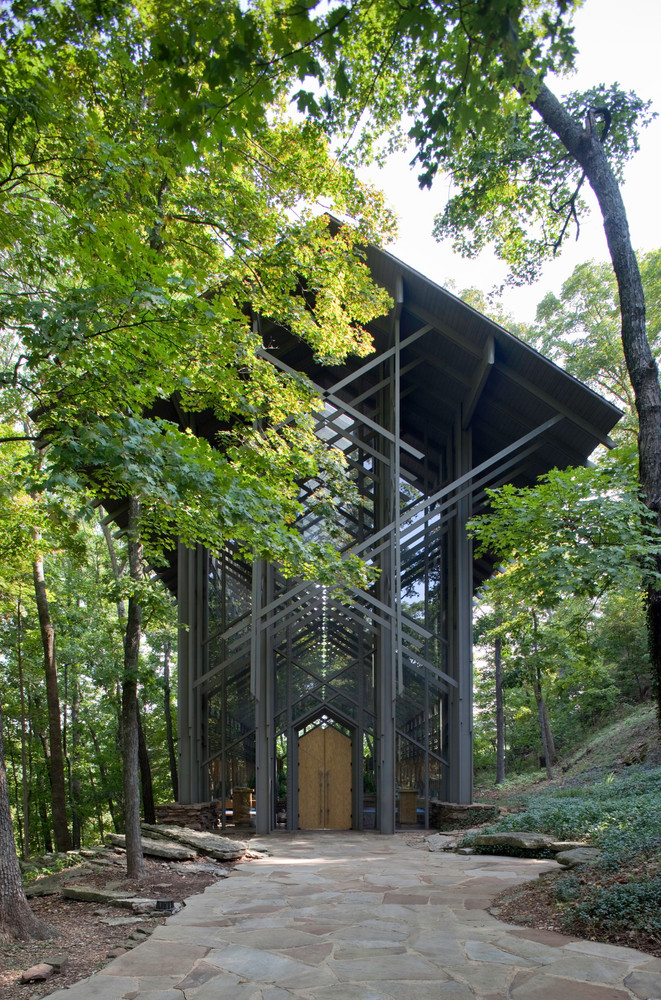
via archdaily 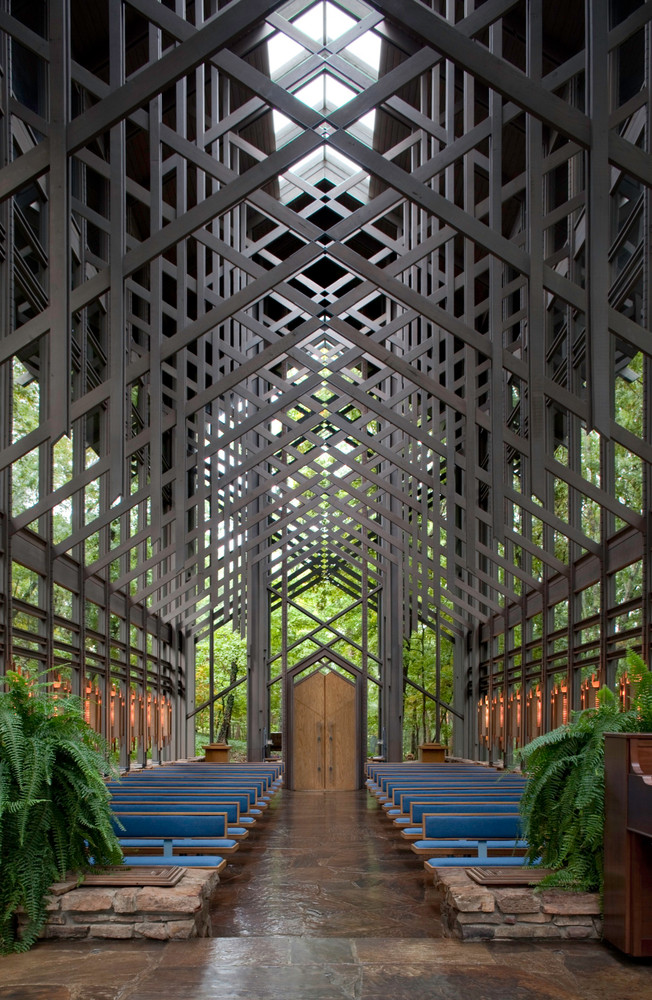
The Khoo Teck Puat Hospital won the inaugural Stephen R. Kellert Biophilic Design Award. The hospital uses nature as a healing process – the rainforest-like landscape infuses the atmosphere with natural sights, smells, and sounds
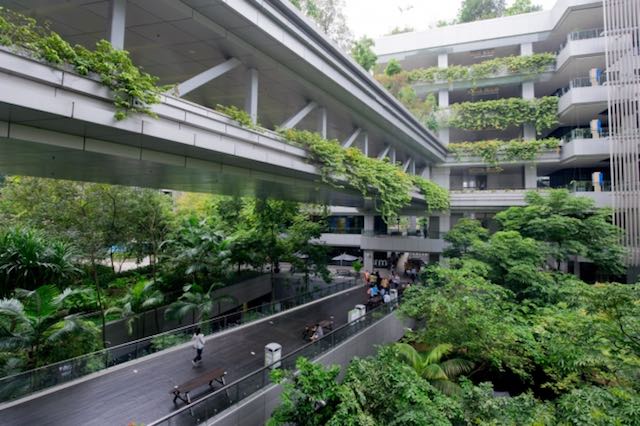
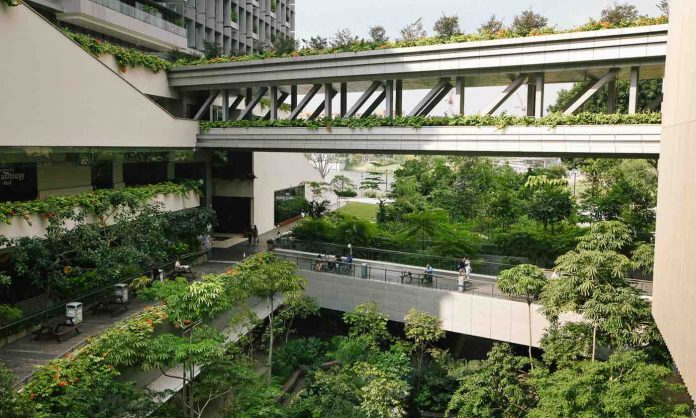
Plan for a new Shenzhen Airport – the design is directly inspired by the organic geometry of the local mangrove tree
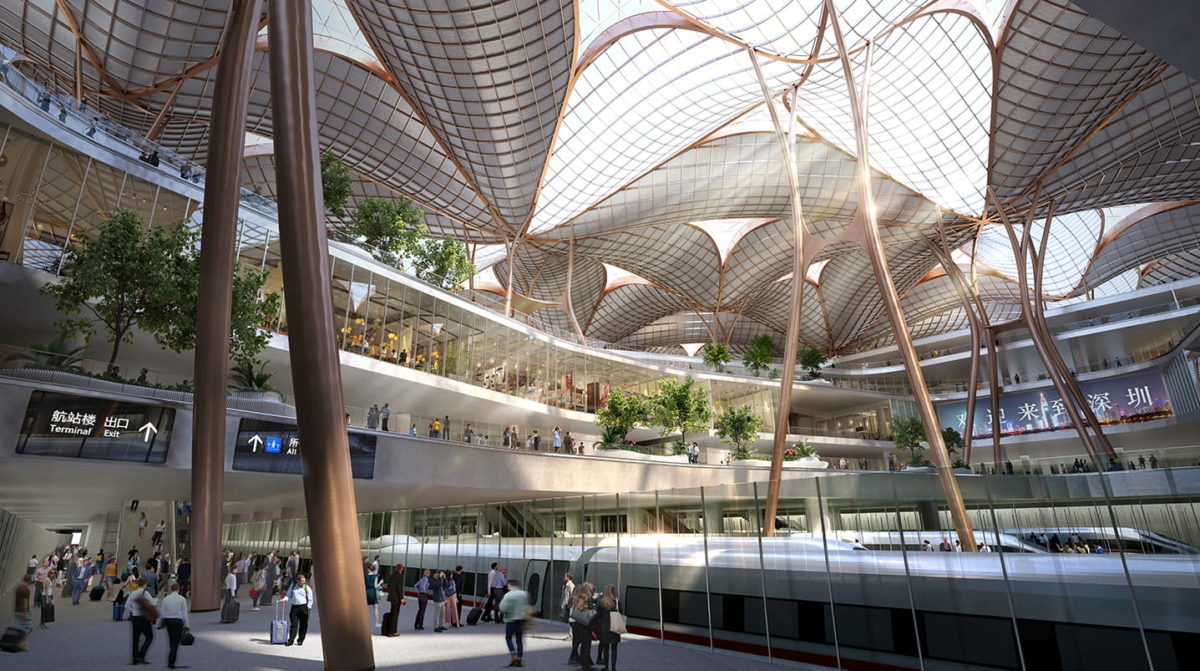
Solar Trees marketplace plan for a three-story marketplace in Shanghai. 32 architectural ‘trees’ inspired by Shanghai’s forests create a sheltered canopy under which modular market stalls will be accommodated
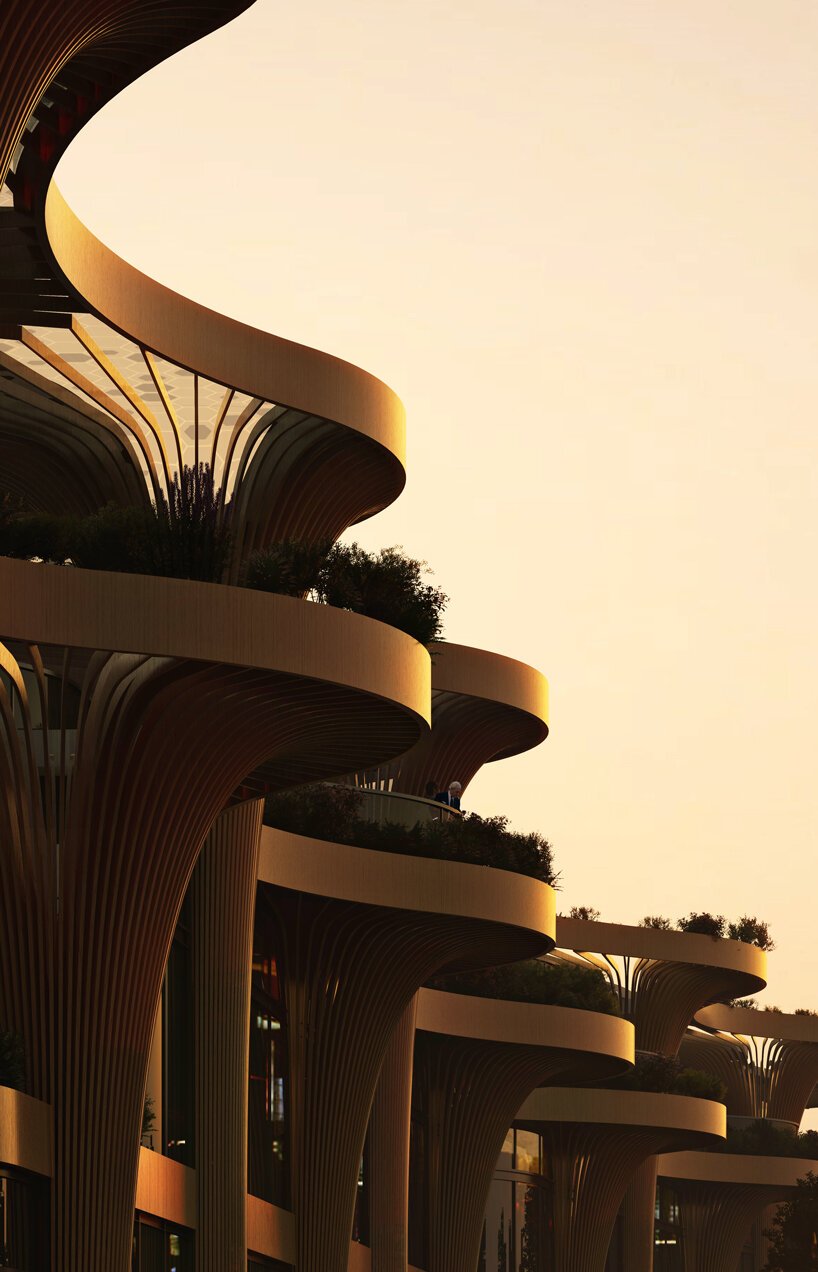
via designboom 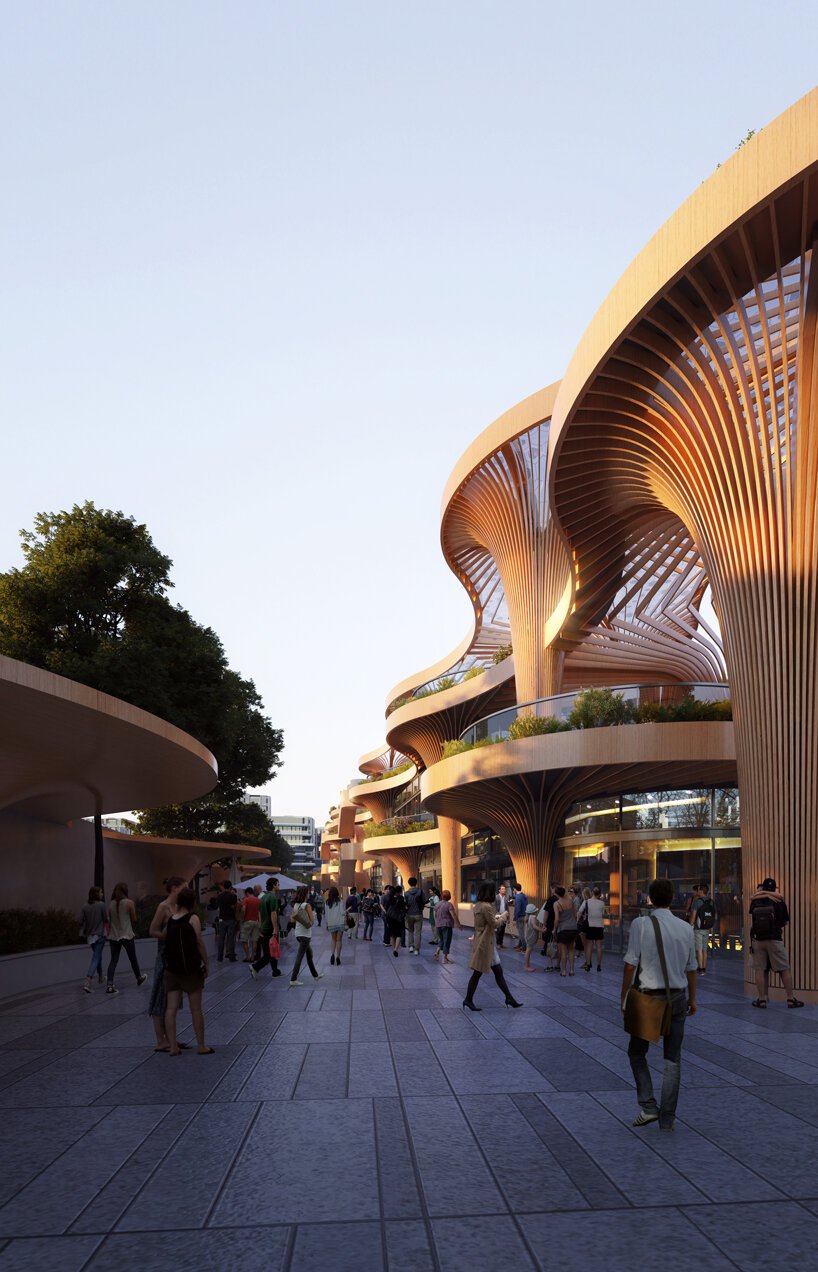
The Amangiri spa in Utah is an example of biophilic design event though it is not filled with greenery – instead, it is in perfect harmony with the surrounding environment. The pool and building were built around a huge rock and natural materials (stone floors, concrete walls, blonde wood), and textures (rawhide, raffia) help retain the area’s color palette. The huge glass windows deliver beautiful vistas and connect the inside and outside.
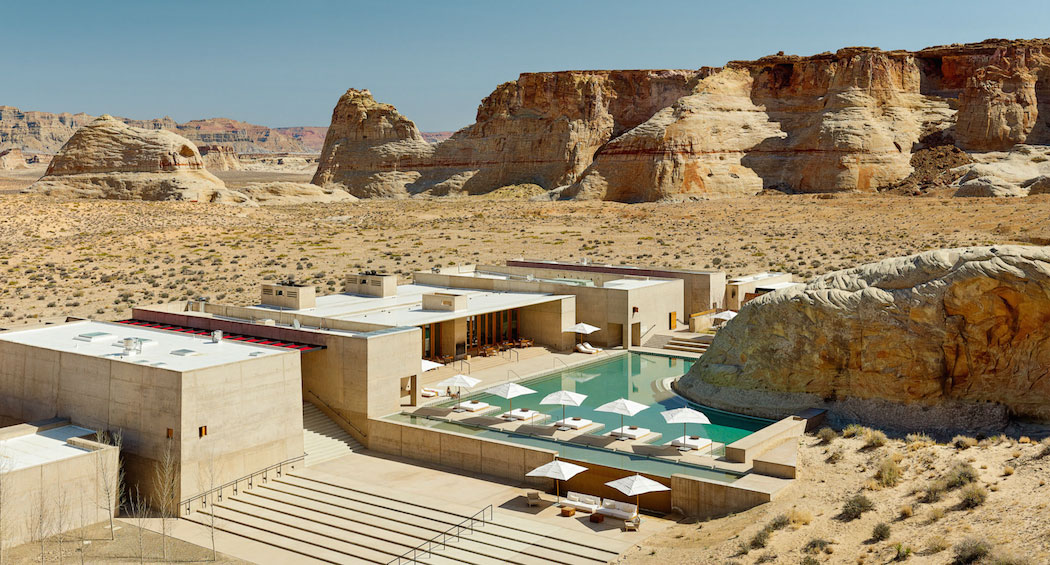
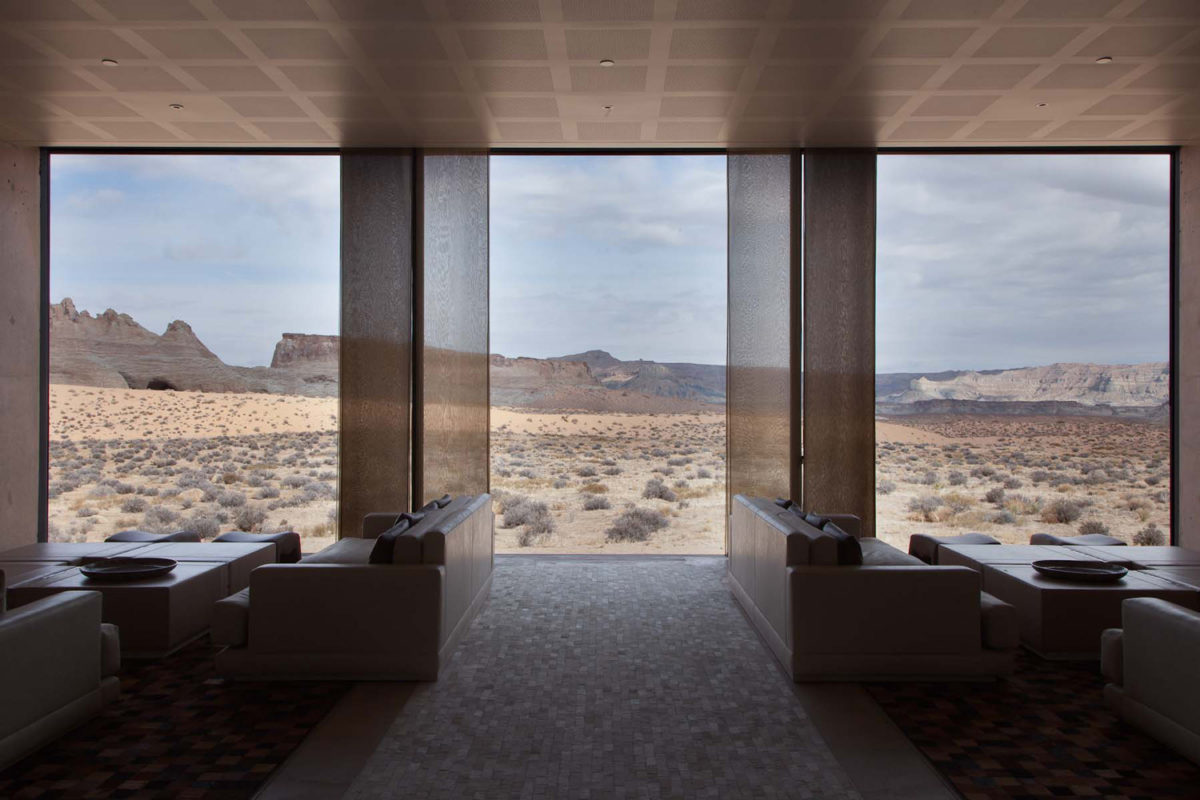
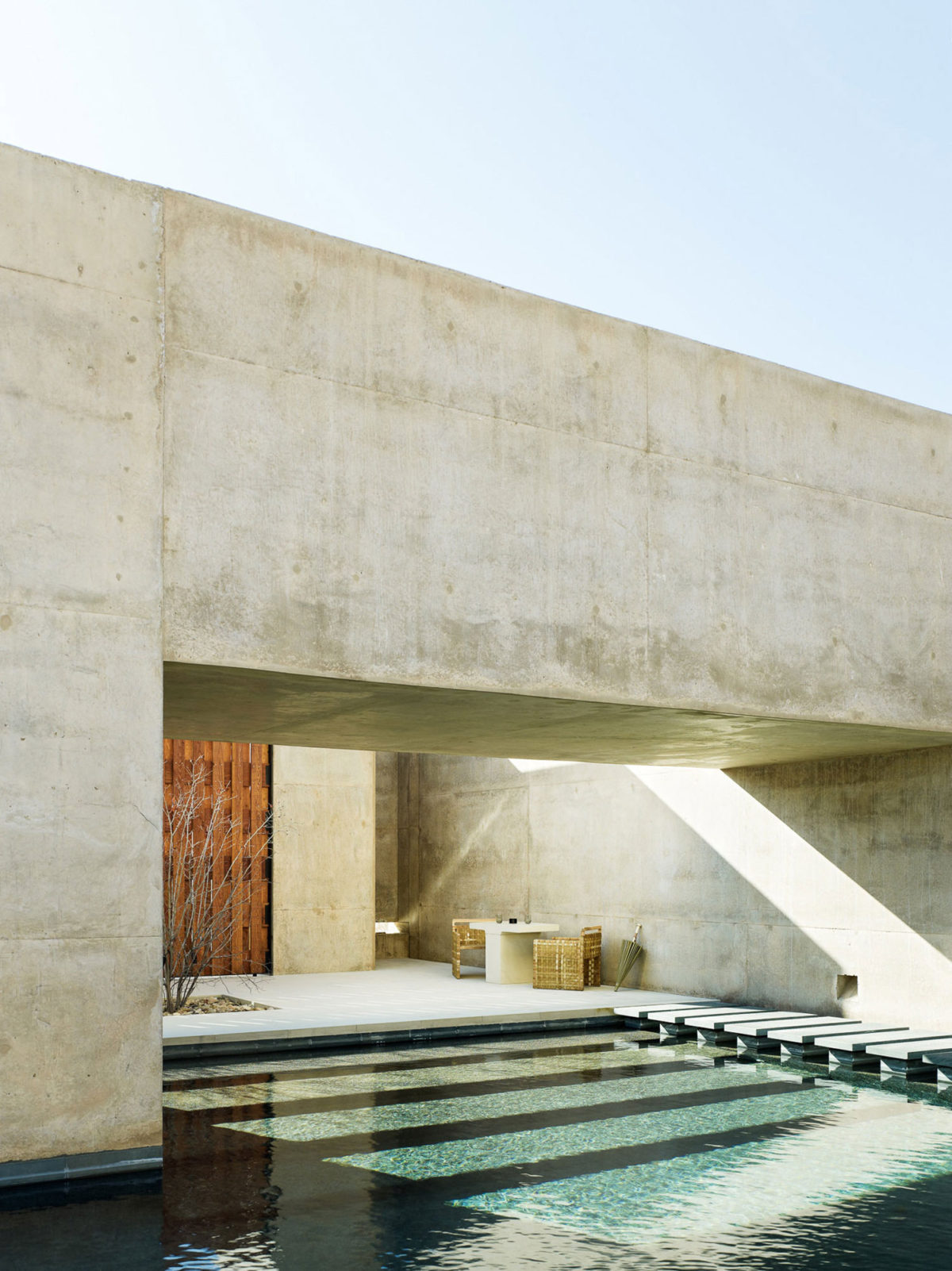
via yellowtrace 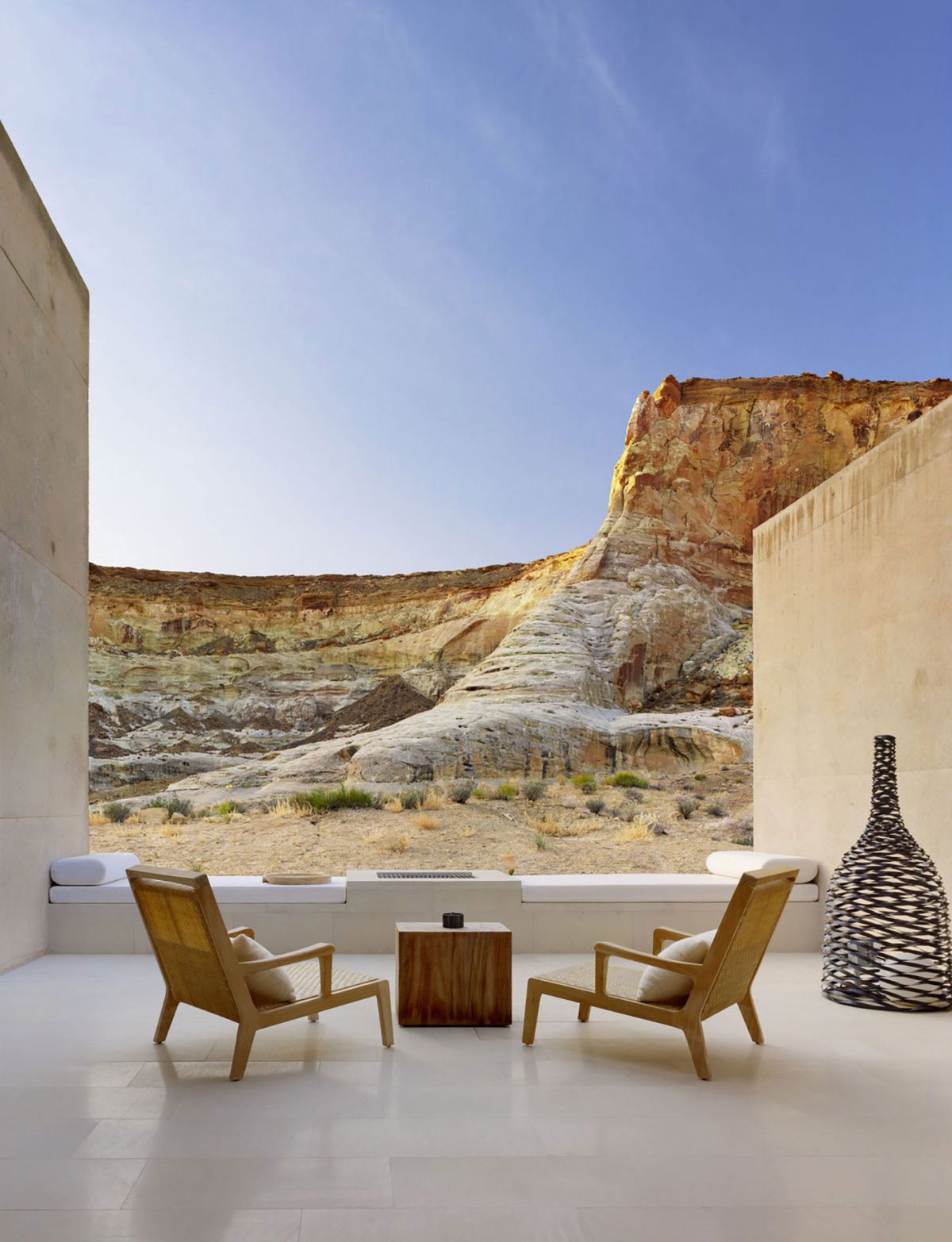
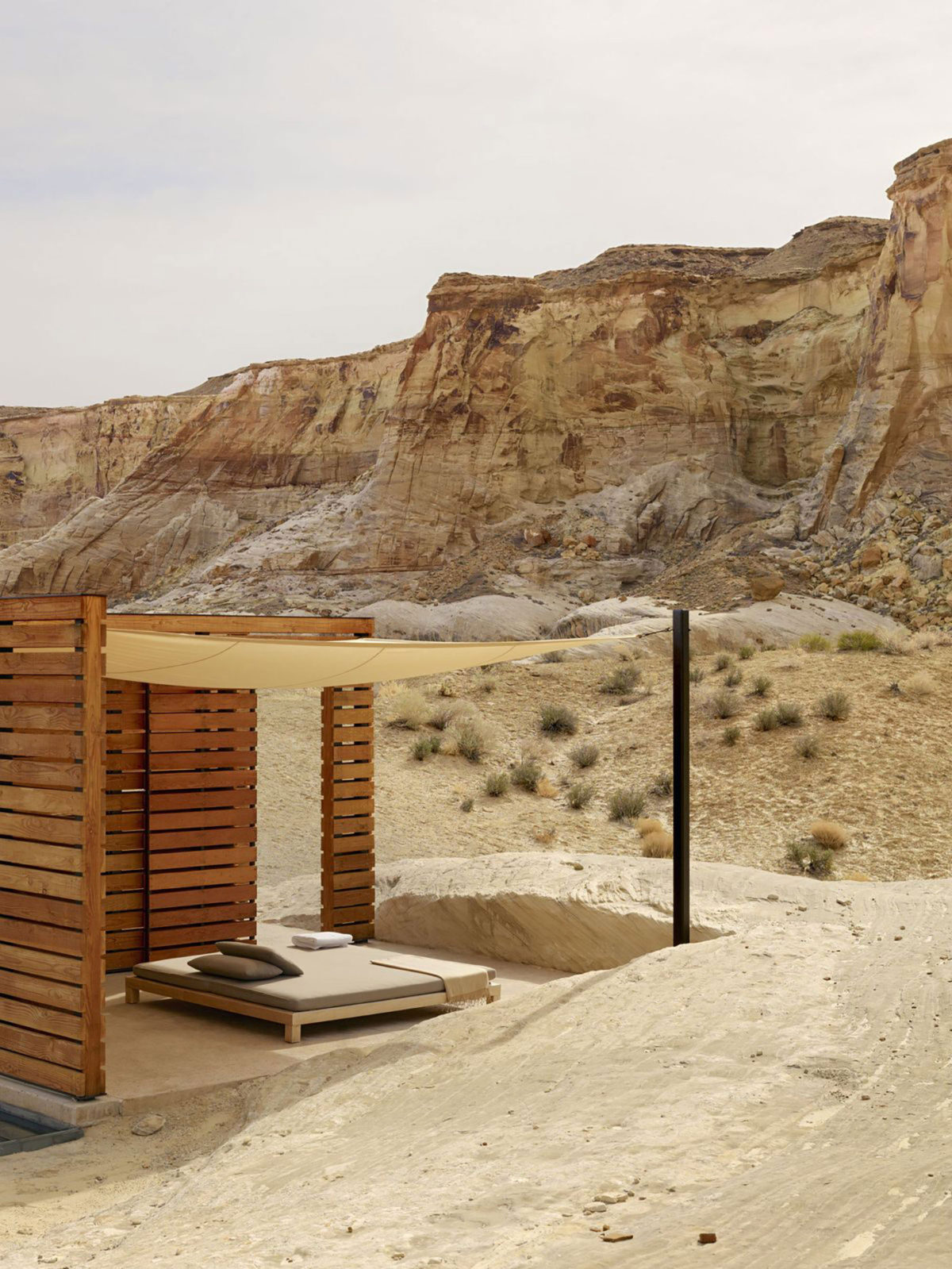
Biophilic indoor garden in the Cuningham Group Architecture office
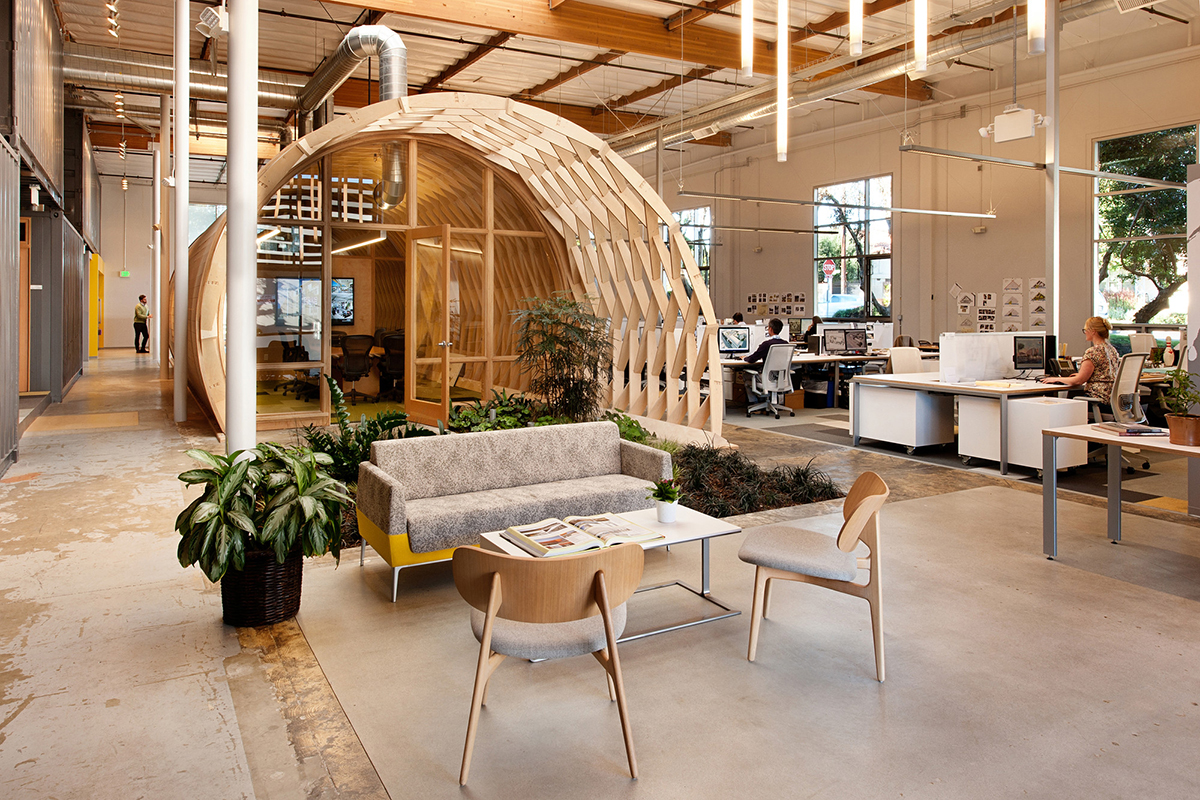
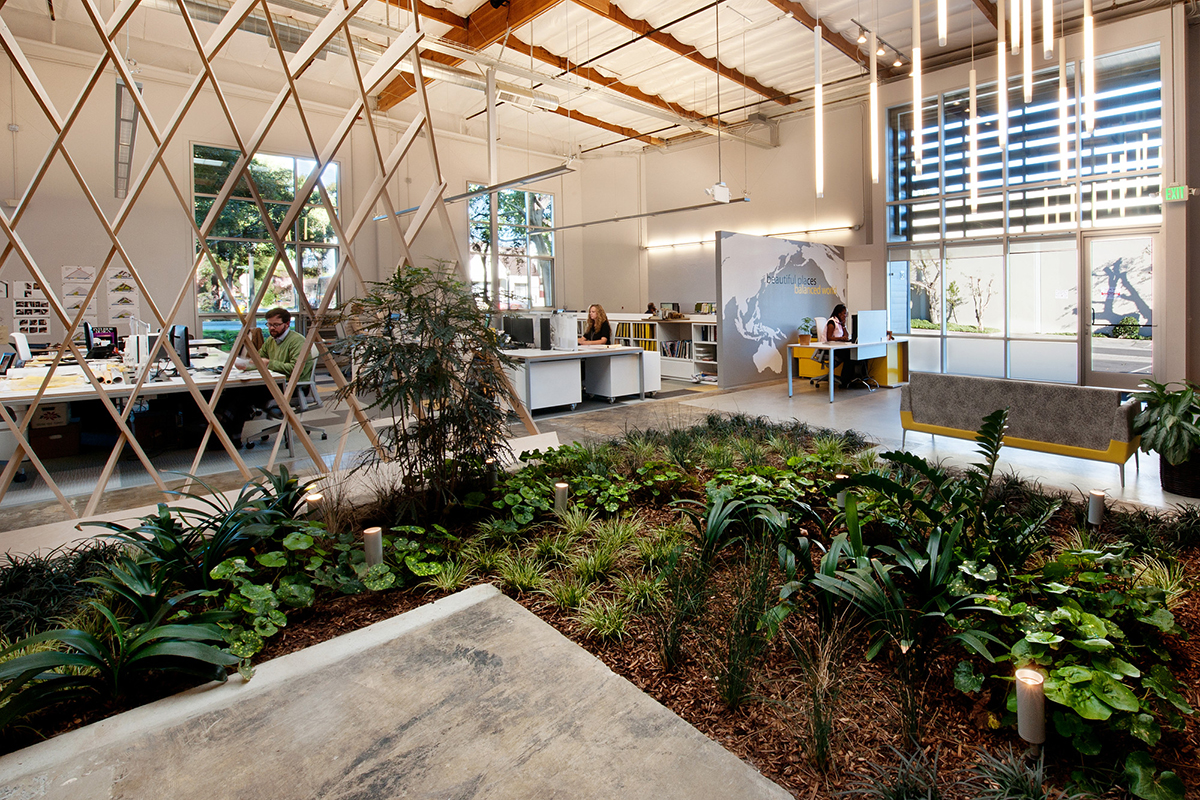
The Robert and Arlene Kogod Courtyard in the Smithsonian American Art Museum in Washington DC features many biophilic design elements, like natural light coming through the woven roof structure, trees, and water pools reflecting weather and lightning conditions
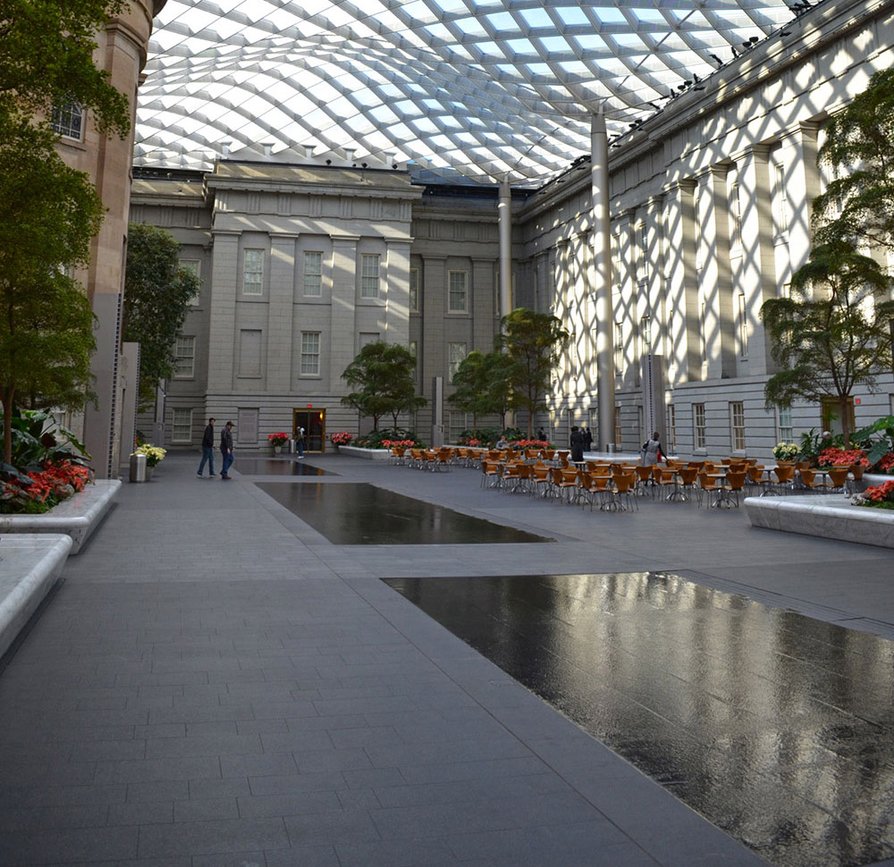
Finally, this villa in Bali is the perfect example of how biophilic design can be used for private residences – the building co-exists beautifully with the surrounding landscape. There are open, flowing spaces, natural and locally sourced materials, an earthy color palette, and an uninterrupted view of the forest.
